- myFICO® Forums
- FICO Scoring and Other Credit Topics
- Understanding FICO® Scoring
- Re: FICO Score 8 Master thread: what we know, what...
- Subscribe to RSS Feed
- Mark Topic as New
- Mark Topic as Read
- Float this Topic for Current User
- Bookmark
- Subscribe
- Mute
- Printer Friendly Page
FICO Score 8 Master thread: what we know, what we think, what we are still learning
Is your credit card giving you the perks you want?
Browse credit cards from a variety of issuers to see if there's a better card for you.
- Mark as New
- Bookmark
- Subscribe
- Mute
- Subscribe to RSS Feed
- Permalink
- Report Inappropriate Content
Re: FICO Score 8 Master thread: what we know, what we think, what we are not clear about
@sarge12 wrote:Might be interesting for us credit score nerds, as long as nobody loses focus on the more important aspects of any credit scoring system.
I think @sarge12 makes a good point here and some general tips like the ones posted, unrelated to the technical side of scoring, should be part of the master file. Something like bullet points, short and concise, keeping the meaning.
2) Mistakes happen, so if you want to be sure there are none on your report an annual pull of all three reports is a good idea...note, I said report not score. It is free once per year, so not pulling it is a mistake, and just to space them out it is good to pull one of them, wait a few months and pull another, then pull the third a few months later. Jan, May, and Sept works. Then start over the next January.
This is always going to be good advice, but at least until 2021, we all get a free credit report every single week from Experian, Equifax, and TransUnion. You can now receive 3 free credit reports each week for the next year
- Mark as New
- Bookmark
- Subscribe
- Mute
- Subscribe to RSS Feed
- Permalink
- Report Inappropriate Content
Re: FICO Score 8 Master thread: what we know, what we think, what we are still learning
Dear @Anonymous
I would suggest that in your lead post, instead of having a section marked utilization, there be 3 separate sections, because too many people get confused among these.
1. Individual account revolving utilization
Utilization is based on reported balance, which in most but not all accounts is statement balance. The most important breakpoint is 30%. 30% or higher causes significant point loss. Optimum to keep at 28% or less to avoid rounding up.
2. Aggregate revolving utilization
Utilization is based on reported balances, which in most but not all accounts is statement balance. The most important breakpoint is 10%. Optimum to keep at 8.9% or less, but more points will be gained by keeping it as low as possible, so long as there is at least one account reporting a small balance.
3. Aggregate installment utilization
The total of all open installment loan balances divided by the total original loan amounts of those loans. Most important breakpoint is 10%. Optimum to keep at 9% or less.



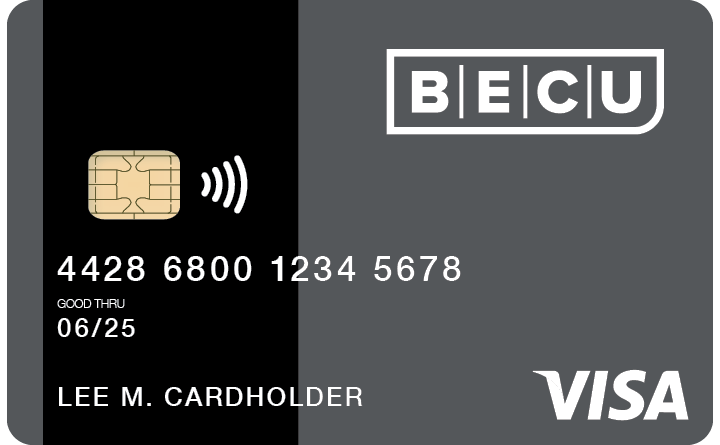








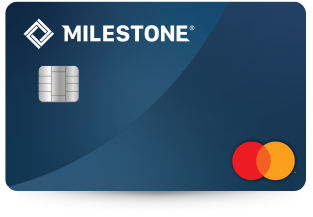
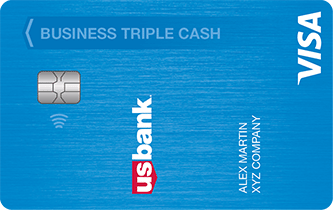

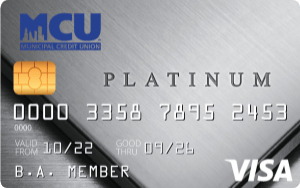

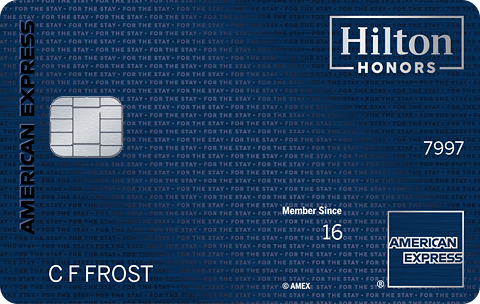
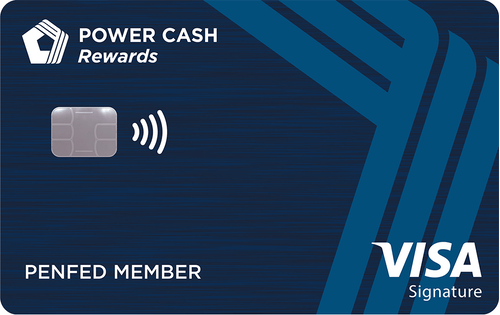


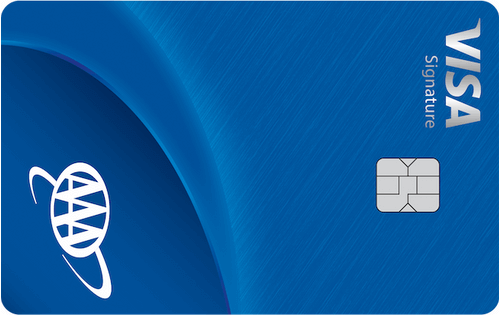

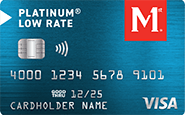



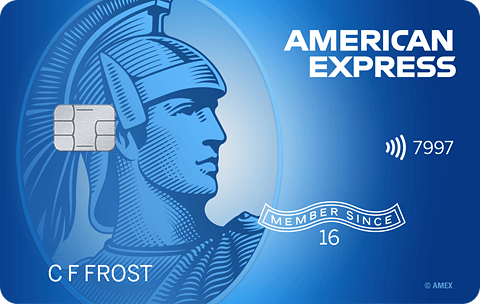




Total revolving limits 569520 (505320 reporting) FICO 8: EQ 689 TU 684 EX 685
- Mark as New
- Bookmark
- Subscribe
- Mute
- Subscribe to RSS Feed
- Permalink
- Report Inappropriate Content
Re: FICO Score 8 Master thread: what we know, what we think, what we are still learning
Proposed revision of Reddit info:
Brief background
Fair Issac and Company - FICO - states that Score 8 is the most widely used credit scoring system. Score 8 is one of many credit score models that FICO created and lenders use to evaluate and score credit risk (Score 2, 3, 4, 8, 9; Bankcard 2, 3, 4, 5, 8, 9; Auto Score 2, 4, 5, 8, 9). There are likely more scores, and we know that 2 new scores are expected to debut in 2020 Score 10 and Score 10T). FICO began creating their systems over 60 years ago (1956). The FICO scoring system as we know it today is only about 30 years old (1989).
FICO is a large, global, publicly owned company with over 4000 employees. It is worth noting that 88% of the $1billion in revenue that FICO generates comes from banking and insurance customers. 35% of that revenue is from international customers. Scores purchased by consumers are a small part of their business.
FICO scoring and these forums
As users of this forum have or will come to learn, there are certain observations that can be said about FICO scoring:
- we have come to know GENERALLY how FICO scoring works, AND
- we have come to know A LOT about how certain aspects of scoring works, BUT
- we have come to know that we do not know EXACTLY how all of FICO scoring works.
FICO's approach to performing credit scoring is proprietary, meaning that it is private. The folks at FICO knows how their scoring systems work. The rest of us take increasingly educated guesses at learning the finer points of those scoring models, and we come to forums like this to learn for ourselves how to understand, improve and manage our scores, and to help others to learn as well.
As of April of 2020, these forums have nearly 300,000 users and over 4 million posts. These forums provide and contain great value.
As users have also likely observed, many of the same questions are asked and answered again, and again.
The purpose of this thread is to try to capture what we know, what we think, and what we are still trying to learn more about. Because there are 28 (or more) FICO models that exist, the guidance and answers that apply to one scoring model may be different for another model. Rather than trying to gather all of the collective learning about all of the FICO scores in one thread, I propose we focus on one score: FICO Score 8.
These forums have MANY VERY smart members with extraordinary depth. It is my hope and intention that we try to capture our knowledge in one thread to make it easier for forum members - new and old - to have a single stop to get the most complete understanding of what we know about FICO Score 8. Although Score 8 was released in 2009, we are still learning more about it today.
At a high level, Score 8, as with other FICO scores, is used by lenders to understand credit risk. Credit risk measures how likely or unlikely it is for a prospective debtor to default on a credit obligation by 90 days in the following 24 months. Each FICO 8 score draws data from its respective bureau, Experian, Equifax and TransUnion to calculate a score. The Score 8 algorithm is slightly tweaked for each of the 3 bureaus. While scores from identical data across bureaus is close, they are not exact. MyFICO Contributor @Birdman7
Score 8 software systems evaluate credit report data, and use very complex mathematics to calculate and report a credit risk score. (How complex, you ask? The underlying math considers Lorenz curves, Gini coefficients, normalized log Bernoulli Likelihood, multicollinearity testing, and other math that is way beyond simple addition, subtraction, multiplication and division.) [ I believe a lot of the mathematic mentioned are used to analyze datasets to create the scorecards (algorithms) used to generate scores. Fact check? BM7]
FICO Score 8 key differences
Score 8 was designed to be more sensitive to high revolving utilization than earlier versions. It excludes nuisance collections (under $100), and is more forgiving of isolated delinquencies compared to earlier versions, but all other accounts must be in good standing. Whereas earlier scoring versions were more customized for each specific bureau, an objective of Score 8 was to reduce disparity among the scores at the 3 bureaus. (Version 9 is supposed to have even less disparity.)
As with other FICO models, there are 5 categories or "ingredients" which are evaluated. Your credit report data is fed into the FICO “blackbox” at the respective CRA (Credit Reporting Agency) and is ran through the appropriate scorecard (algorithm). The scorecard evaluates your data based on these 5 areas and result in a numerical score and negative reason codes. Positive reason codes are meaningless and should be ignored. FICO Score 8 ratings and scores are:
Rating Score range
Exceptional (or excellent) 800 - 850
Very good 740 - 799
Good 670 - 739
Fair 580 - 669
Poor 300 - 579
The categories/ingredients that are evaluated from your credit report, and their weightings are:
- Payment history 35%
- Amount of debt 30%
- Length of history 15%
- New credit 10%
- Credit mix 10%
There are various scoring factors (metrics) within each category. The metric’s signal strength (weighting) varies and is determined by scorecard. Going back to math, FICO created math based systems called "scorecard modules" or scorecards using a FICO technology called INFORM. Scorecards are algorithms by their simplest definition. Scorecard is determined by segmentation factors. Scorecards use a variety of scoring factors to generate a score. The scoring factors are weighted differently based on scorecard.
Score 8 has 8 clean and 4 dirty scorecards. Which scorecard you are assigned to depends on the segmentation factors. These segmentation factors include clean/dirty (the presence of derogatory information like late payments or public records); t. hin/thick (number of open and closed accounts); aged/non-aged (age of oldest account); and new account/no new account (recency of new accounts in your credit report).
Within each category are various scoring factors, which determine score and vary in weighting scoring factors among scorecards. Scorecarding is a complex matter to be covered in another post on this thread; there are many posts scattered these forums that we will try to consolidate here. What is important to know about scorecards is that they impact how your specific score responds to information in your credit report.
Remember that credit scores are connected with approvals, but are often not the only factor. Inquiries (more here) are used to: 1) generate your score and negative reason codes, 2) analyze your credit data, and 3) give notice to other lenders you have sought credit. This information is used to determine approvals, interest rates, terms, and starting credit lines. Credit scores matter, but are not the sole reason consideration. Lenders will also ask for data not contained in the CR data to consider, as well, such as income and housing expenses. Please note income is not reported to the bureaus and is not a part of scoring. Lenders consider that separately.
So, how does scoring work in FICO Score 8?
Again, we do not know all aspects with precision. There are a number of things that have been learned. Many thanks to Reddit user rtanaka6, who captured many of Score 8 highlights from years reading this forum in a Reddit post. I have included part below with major modifications. Also, note: this first post is dynamic. I will update it with credit given to posters who provide their expertise so we can recognize and thank them for helping us to get smarter.
PAYMENT HISTORY
This is the most important category. The algorithm looks for lates, COs, Collections, BK, etc.. Ideal is that it finds absolutely none. If it finds even one isolated 30 day late, you will remain in your clean scorecard with significant penalty. It is believed the penalty is reduced at certain thresholds such as 2 years for a minor delinquency, but all baddies will affect score for 7 years. While there is not 100% confidence, it’s believed multiple 30s or anything worse banishes you to a dirty scorecard.
Clean/Dirty is the first segmentation factor and determines the subsequent segmentation factors, which for a clean profile is then Thin/Thick, then Aged/Non-Aged and then New Account/No New Account.
Additionally, on some scorecards gains are seen with accounts at 3, 6, and 9 months of age. @Birdman7 believes this may come from this category by number of month thresholds being passed with no negative payment history.
Loans can also give significant points over time with no negative payment history, as opposed to hitting the installment utilization thresholds. These points could also derive from this category.
- Writing goodwill letters to have late payments removed are the best recourse
- Note: that process may take months, depending on creditor
- Max Penalty: 7 years, some penalties reduced at 2 years and maybe other thresholds.
- Serious Derogatory marks result in scorecard assignment to a dirty scorecard (@Birdman7 )
edit 4/25/20 11:38pm
- Mark as New
- Bookmark
- Subscribe
- Mute
- Subscribe to RSS Feed
- Permalink
- Report Inappropriate Content
Re: FICO Score 8 Master thread: what we know, what we think, what we are still learning
AMOUNT OF DEBT CATEGORY
1. Utilization – There’s a great thread where one of our esteemed MyFICO Contributors really dove into utilization, please read this post for more detail. [Link to utilization thread by @Anonymous]
Individual and aggregate utilization are scoring factors.
REVOLVING
- The major recognized Aggregate revolving utilization thresholds occur at 9%, 29%, 49%, 69%, 89%, 100% (Some scorecards may also have lower thresholds.)
- The major recognized Individual revolving utilization thresholds occur at 29%, 49%, 69%, 89%, 100% (Some scorecards may also have lower thresholds.) (Individual utilization is usually but not always same as statement balance.)
For max points, you should remain under the lowest thresholds. As you go up, penalties are assessed, more per threshold for aggregate than individual.
INSTALLMENT
- Installment loans: go by aggregate installment utilization of all open installment loans (current total balances divided by the total original loan amounts) The largest threshold (biggest point award) comes when B/L falls below the 9% threshold per MyFICO Contributor @SouthJamaica See SSL thread for detailed information on a strategy discovered and devised by our esteemed Moderator Emeritus @Revelate.. A smaller award is believed to have a threshold ~65%. Some have reported a few points at higher thresholds. [Our MyFICO Contributor @CassieCard confirmed (proof) the thresholds are ≤ the whole numbers, e.g. 9%, rather than <8.9%, which was a long running controversy]
-Be aware that while paying aggregate installment utilization to ≤9% gives a nice award 15-35 points depending on scorecard, there is also evidence that time open can offer points for installment loans. (credit to MyFICO Contributor @Saeren for top end of range of 35 points on SSL.)
2. Number of Accounts/Revolvers Reporting Balance
Number of revolvers/accounts reporting a balance is a scoring factor and may impact score, independent of utilization. (Off topic, but this metric is much more influential for the mortgages scores, which also has lower thresholds.)
[There is debate as to whether the number of accounts reporting a balance metric includes all accounts or just revolving accounts. Likewise, there is debate as to whether raw number is where the thresholds lie or whether the thresholds are percentages or somehow both. Many people believe Score 8 has a 33% threshold, maybe a 40%, probably a 50% and a 100%. More testing is probably advised and hopefully other members can add data. Oh, and just recently evidence has come to light by MyFICO Contributor @Trudy that this metric may also include closed revolvers on EX2. See link. we must still replicate/verify on EX2 and then determine whether it is applies to Score 8.]
While not counting towards utilization, true charge cards do count toward one's number of accounts with balances in Score 8.
3. All Zero Penalty- When all revolvers report 0 balance, there is a scoring penalty of ~10-25 points. If one has AU cards and they all report 0 balances, the penalty will also occur. To avoid this and maximize scores, many people use AZEO [add link], where only 1 revolver reports a small balance $5-$20.
4. CO Chargeoffs with balances are considered maxed out, as when closed, CL is typically reduced to 0.
5. Raw Dollar Amount Metric- (To be added)
LENGTH OF HISTORY (Aged/Non-Aged)
1. AoOA - Age of Oldest Account is a segmentation factor in clean profiles
- Used in FICO clean profiles.
- While not a FICO 8 scoring factor, AoOA is used to segment and establish scorecard assignment.
2. AAoA - Average Age of Accounts is a scoring factor
- Thresholds are typically found at year points, but not all.
- +3-10 points annual increase
- Maximum AAoA for scoring is believed to occur at 7Y 8M
3. AAORA- Average age of Revolving Accounts- under study
4. AOORA-Age of Oldest Revolving Account- under study
5. AAOIA-Average age of Installment Accounts- under study
6. AOOIA-Age of Oldest Installment Account- under study- (may be oldest open installment)
NEW CREDIT (New account/No New Account)
1. AoYA or AoYRA - Age of Youngest (Revolving) account is a segmentation factor in clean profiles
- Used in FICO clean profiles.
- Will cause a 10-30 point hit if your AoYRA drops from over 12+ months to 0 months due to new credit
- Will cause a 10-30 point hit if your AoYRA drops from over 2.5 years to 0 months due to new credit.
In other words there is no scoring benefit to having an AOYRA over 12 months on the general Score 8, as the threshold lies at 12 months for Score 8.
- The penalty for AoYRA applies during the first 12 months; at 12 months, penalty points are recovered via scorecard reassignment.
2. Inquiries More on inquiries in general on this thread.
- Inquiries may count for 0-20 FICO points (MyFICO Contributor @CassieCard experienced a 20 point drop for one inquiry on a young/thin scorecard. Proof. )
-Inquiries are believed to be “binned.” This means there may be a score loss for the 1st, but not the 2nd, maybe for the 3rd, but not the 4th, etc.. Exact bins are not known and may vary by scorecard.
- Inquiry penalty points are returned at 365 days, unless it falls in a bin.
Inquiries will remain on your report for a up to 25 months, but are only scoreable 1 year.
3. Spree Penalty "Too many accounts recently opened" reason code [I don't believe this is a code from version 8. Can anyone confirm? If not, remove.]
- too many new accounts opened within {0, 30, 60, 90} days of opening an account can cause an additional penalty. This penalty is believed to cease at 12 months- @Anonymous.
Note: "New Account penalty points" come from scorecard reassignment WHEN you have no revolver under 12 months. Any losses from subsequent revolvers reporting are from AAOA hits, AAORA hits, or utilization changes; these changes also occur in the former situation upon the first card reporting, but because the algorithm accounts for them in one swoop, it is exceedingly difficult to discriminate how many points are awarded/penalized from reassignment vs. the other metrics. However, if no aging or utilization thresholds are crossed, that can make educated guesses easier. The takeaway is there is no new account penalty for a 2nd or subsequent card, though losses may come from other metrics.
CREDIT MIX
1. Number of accounts is a segmentation factor. (Thin/Thick)
It is believed that if you have 5-6 accounts on your CR, you are in a Thick scorecard.
2. Mix For Score 8 it is commonly believed you are under penalty unless you have at least 3 revolvers and 1 installment loan on record, open or closed. Upon acquiring you first cards and loan, these penalties are reduced and points awarded. The amount is unclear as it occurs upon reporting, which changes many scoring factors. When a new revolver reports, you can also possibly have a scorecard reassignment, if you have no revolver under 12 months of age and one reports. This typically results in a score drop commonly referred to as the "new account" penalty, which can be exacerbated by aging hits. It can be reduced by increased TCL, if it causes thresholds to be crossed. It can also be reduced by the "too few cards" penalty being reduced by your first few cards or by an award for your first loan (mix points)
3. Open/Closed timeframes Accounts that are closed are "supposed to” remain on CR for 10 years, but this is often not true. For example, @SouthJamaica reports accounts being dropped after a year being closed, IIRC. Therefore, a closed loan satisfies the credit mix requirement for a loan, but who knows when it will disappear? Plus, as discussed in Amounts Owed, supra, having an open loan with B/L <9% offers 15-35 bonus points.
Category Optimal FICO Score requirements
Payment History | 100%, Zero baddies Zero. Score penalty removed after 7 years. |
Utilization | ≤9.0% but above $5 on one revolver; Loan B/L ≤9% |
Number of Accounts Reporting Balance | I'd recommend under 33% of revolvers, IMHO, and this is a metric that does vary by bureau and scorecard |
| Raw Dollars Owed | Under $200 |
| AoOA-Oldest account | Not a scoring factor. Segmentation factor for clean profiles. Believed to be between 10-15 minimum |
AAoA | Max bonus believed to be at 7 years 8 month |
Youngest account/revolver (AoYRA) | Not a scoring factor. Used as a segmentation factor for clean profiles. Penalty removed at 12 months AOYRA, so 12+ months. |
Inquiries in Last Year | Zero. Score penalty removed after 1 year |
Spree Penalty | Score penalty if less than 90 days between apps. Complete score penalty removed after 6 months [Version 8?] |
Total Number of Accounts/Mix | Not a scoring factor. Used as a segmentation factor for clean profiles. 5-6+ credit cards for Thick + 1 installment loan for mix points |
Notes:
HOWTO: Get a +62 point FICO 8 jump on a clean file with thanks to @CassieCard
Edited 4/26/20 4:00am
- Mark as New
- Bookmark
- Subscribe
- Mute
- Subscribe to RSS Feed
- Permalink
- Report Inappropriate Content
Re: FICO Score 8 Master thread: what we know, what we think, what we are still learning
@Anonymous Thank you. You are indeed an animal!
- Mark as New
- Bookmark
- Subscribe
- Mute
- Subscribe to RSS Feed
- Permalink
- Report Inappropriate Content
Re: FICO Score 8 Master thread: what we know, what we think, what we are still learning
@AnonymousThank you for doing this agreeing to edit it and maintain it. This is actually something that I’ve wanted to do ever since shortly after joining. I really had thoughts of doing one for each of the major versions but it’s just so much work. You’ve made it a lot easier by giving a starting point, something to edit and work with. And I’m sure many other members will have a lot to contribute and may even take issue with some of the things I’ve edited. And if so, then we need to note that those things are in controversy.
There’s a lot I don’t know, but everything I do know, I’ve got to credit this forum and my testing as a result of this forum. But the majority of the information I know, I have learned from this forum and the wonderful members here.
You’re definitely an asset and I’m glad we’ve got you here getting this done. IMHO we also need to add a section on negative reason codes (maybe @Revelate would be kind enough to offer insight there) and maybe have @Anonymous or @HeavenOhio write up something on about the dollar amount metric. It should fall under amounts owed category, I believe.
And it would be awesome if we had @Thomas_Thumb review the whole thing and offer insights.
Not to mention there are a wealth of other highly knowledgeable members here that will hopefully offer additional insight and information and data. The fact that I’m not specifically naming everyone here is because the list is too long, but we’ve got so many great members here with great information and I’m grateful to all of them.
- Mark as New
- Bookmark
- Subscribe
- Mute
- Subscribe to RSS Feed
- Permalink
- Report Inappropriate Content
Re: FICO Score 8 Master thread: what we know, what we think, what we are still learning
- Mark as New
- Bookmark
- Subscribe
- Mute
- Subscribe to RSS Feed
- Permalink
- Report Inappropriate Content
Re: FICO Score 8 Master thread: what we know, what we think, what we are still learning
I just posted a new topic, titled "HOWTO: Get a +62 point FICO 8 jump on a clean file".
This is something I've been meaning to put together for a while now, especially since I have never read about such a gain on a clean file.
It's easy to understand why: hardly anyone in the world gardens a single installment loan for a year and then checks their score at the 1 year mark!
I can't think of how to incorporate it in the master post. Just a single line would suffice. I wish I would have known that trick at 17!
Also...I second what @Anonymous said about you, @Anonymous. Many people had this idea in their head - you made it happen! And Birdman7 really knocked it out of the park with that major edit.
- Mark as New
- Bookmark
- Subscribe
- Mute
- Subscribe to RSS Feed
- Permalink
- Report Inappropriate Content
Re: FICO Score 8 Master thread: what we know, what we think, what we are still learning
Thank you @Anonymous for the kind words. I owe it all to the forum and am glad to give back. I'm actually working a little more on it and I'm gonna post a revised edit without strikethrus and re-arranged. Hoping everyone will find it an acceptable start.
Ill include a spot for your link.
I'l post my revision later, so thats the one ill need critiqued. i'm gonna overwrite my earlier one so as not to clutter.
- Mark as New
- Bookmark
- Subscribe
- Mute
- Subscribe to RSS Feed
- Permalink
- Report Inappropriate Content
Re: FICO Score 8 Master thread: what we know, what we think, what we are still learning
@Anonymous , Well buddy, looks like you had some rest and Wheaties! Great post.
That same old closed account that fell off and reduced my AAoA from 11y11m to 11y8m, something not considered significant but reduced all of my EX2 scores, fell off EQ & TU within the last week (per CK and MyFICO - got an alert for TU). I will get my 3B FICO 8's in a few days through my EX subscription, but that change didn't impact my "8" scores. But I will get my 3B from MyFico around the 11th and see how it may impact my 4 & 5 scores. Not real time and other changes will be reduced revolving and Installment UTL, but we'll see.


